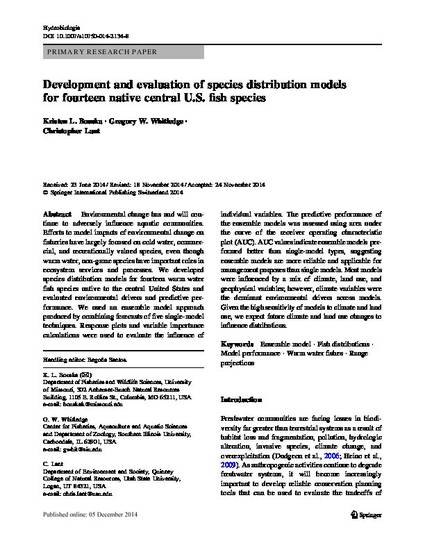
Article
Development and evaluation of species distribution models for fourteen native central U.S. fish species
Hydrobiologia
(2015)
Abstract
Environmental change has and will continue to adversely influence aquatic communities. Efforts to model impacts of environmental change on fisheries have largely focused on cold water, commercial, and recreationally valued species, even though warm water, non-game species have important roles in ecosystem services and processes. We developed species distribution models for fourteen warm water fish species native to the central United States and evaluated environmental drivers and predictive performance. We used an ensemble model approach produced by combining forecasts of five single-model techniques. Response plots and variable importance calculations were used to evaluate the influence of individual variables. The predictive performance of the ensemble models was assessed using area under the curve of the receiver operating characteristic plot (AUC). AUC values indicate ensemble models performed better than single-model types, suggesting ensemble models are more reliable and applicable for management purposes than single models. Most models were influenced by a mix of climate, land use, and geophysical variables; however, climate variables were the dominant environmental drivers across models. Given the high sensitivity of models to climate and land use, we expect future climate and land use changes to influence distributions.
Disciplines
Publication Date
2015
DOI
https://doi.org/10.1007/s10750-014-2134-8
Citation Information
Christopher L. Lant. "Development and evaluation of species distribution models for fourteen native central U.S. fish species" Hydrobiologia Vol. 747 Iss. 1 (2015) p. 159 - 176 Available at: http://works.bepress.com/christopher_lant/170/
